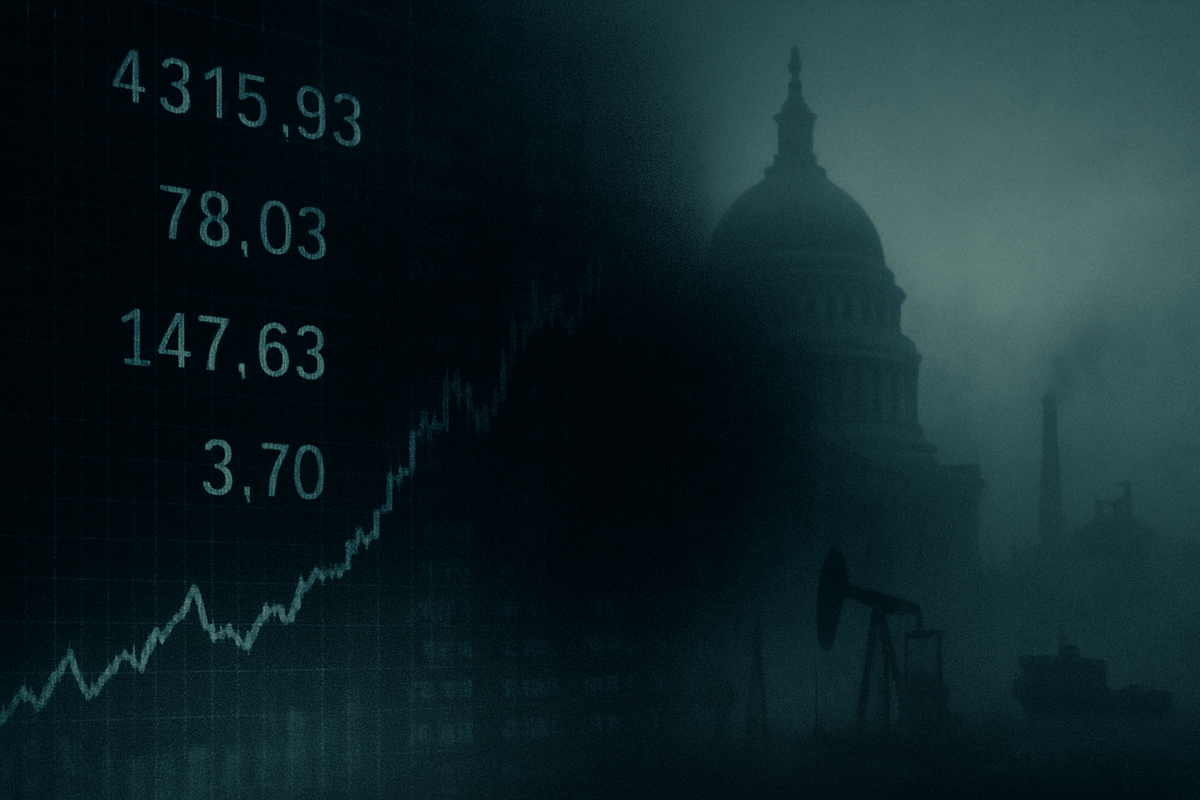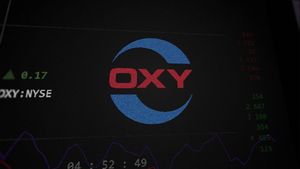
Early October 2025 has presented a paradox for the U.S. financial markets. Despite a federal government shutdown that commenced on October 1st, major indices like the S&P 500, Dow Jones Industrial Average, and Nasdaq Composite have surprisingly exhibited resilience, even reaching new highs. However, beneath this veneer of market strength lies a growing undercurrent of concern, primarily fueled by the immediate and profound impact of the shutdown on the availability and reliability of critical economic data. This "data blind spot" is creating significant uncertainty for policymakers, businesses, and investors alike, potentially masking underlying economic vulnerabilities and signaling broader slowdowns that could ripple through industrial and energy commodity markets.
The Unseen Hand of Uncertainty: Government Shutdown Stifles Economic Visibility
The federal government officially entered a shutdown on October 1, 2025, after Congress failed to pass the necessary appropriation bills. This impasse immediately triggered a suspension of operations or significant staffing reductions at key statistical agencies, including the Bureau of Labor Statistics (BLS), the Census Bureau, and the Bureau of Economic Analysis (BEA). Consequently, vital economic reports—such as the monthly jobs report, weekly unemployment claims, the Consumer Price Index (CPI), Producer Price Index (PPI), retail sales figures, and GDP estimates—have been delayed or canceled. Data collection activities for various surveys have also ground to a halt.
This unprecedented lack of real-time economic indicators has plunged policymakers into a "data blind spot," severely complicating the Federal Reserve's (Fed) ability to make informed decisions on monetary policy and interest rates. With inflation still above target and some early signs of a cooling labor market (such as a surprising private payroll loss in September reported by ADP), the absence of comprehensive data increases the risk of missteps, potentially forcing the Fed to pause further rate cuts or make decisions based on incomplete information. Initial market reactions have been mixed; while the headline indices have shown resilience, some analysts point to "bubbly" valuations reminiscent of the dot-com era, suggesting a selective market driven by a few strong sectors rather than broad-based health. Historically, October has been a volatile month, and a prolonged data vacuum could exacerbate this inherent instability.
Industrial and Energy Sectors Brace for Impact
The potential for broader economic slowdowns, exacerbated by the data blackout, casts a long shadow over sectors heavily reliant on consistent economic activity and predictable demand, particularly industrial and energy commodities. Companies in the industrial sector, such as General Electric (NYSE: GE) and Caterpillar (NYSE: CAT), often depend on government contracts and stable economic growth for demand in infrastructure, manufacturing, and heavy machinery. Delays in government contracts and a general slowdown in business investment due to uncertainty could directly impact their order books and revenue streams. Furthermore, a decline in accurate manufacturing and construction data makes it difficult for these companies to forecast demand and manage supply chains efficiently.
The energy sector, including giants like ExxonMobil (NYSE: XOM) and Chevron (NYSE: CVX), faces a double-edged sword. While geopolitical tensions can sometimes support oil prices, a significant global or domestic economic slowdown directly translates to reduced demand for crude oil, natural gas, and refined products. The absence of reliable economic growth indicators, such as industrial production, manufacturing output, and consumer spending data, makes it challenging for energy companies to predict future demand and adjust production strategies. A prolonged shutdown, leading to a tangible economic contraction, could depress energy prices, impacting profitability and investment in new projects. Conversely, companies with strong balance sheets and diversified operations might be better positioned to weather the storm, potentially acquiring distressed assets or expanding market share if smaller, less resilient competitors struggle. Utilities and companies with stable, regulated revenue streams might also be seen as safer havens during periods of economic uncertainty.
Wider Significance: A Precedent for Economic Stagnation?
This government shutdown and its subsequent data freeze fit into a broader narrative of increasing fiscal uncertainty and political polarization in the U.S. While previous shutdowns have occurred, the current market environment, characterized by elevated valuations, persistent inflation, and a delicate monetary policy balancing act, makes the data vacuum particularly precarious. The event highlights the critical role of government statistical agencies in maintaining market transparency and enabling sound economic decision-making. The ripple effects extend beyond specific companies; partners and suppliers to federal contractors will also feel the pinch, and the broader financial system faces increased systemic risk due to impaired visibility.
Regulatory agencies operating with minimal staff can create bottlenecks for approvals across various sectors, from environmental permits to new drug clearances, impacting industries from healthcare to technology. Historically, government shutdowns have demonstrably reduced GDP growth, with each week of closure potentially shaving 0.1 to 0.3 percentage points off economic expansion. While some lost GDP can be recouped, a portion is permanently forgone. This situation draws comparisons to past periods of economic uncertainty where a lack of clear signals led to investor apprehension and market corrections. The debate over extending Affordable Care Act (ACA) premium tax credits during the shutdown also underscores how fiscal impasses can directly impact consumer costs and the healthcare sector.
What Comes Next: Navigating the Fog of Uncertainty
In the short term, the market's initial resilience may give way to increased volatility if the shutdown persists and the economic data void continues. Investors will be keenly watching for any signs of a resolution, as well as alternative data sources that might offer glimpses into the true state of the economy. Companies will need to adapt their strategic planning, potentially relying more on private sector data, industry-specific reports, and anecdotal evidence to guide decisions on investment, hiring, and supply chain management. For industrial and energy companies, this could mean delaying capital expenditures or re-evaluating expansion plans until economic visibility improves.
Long-term possibilities include a potential re-evaluation of how critical government data is for market stability, possibly leading to calls for better contingency planning or even the privatization of certain data collection functions, though this is a contentious idea. Market opportunities may emerge for companies that can provide robust alternative data analytics or those with business models less dependent on immediate government action or highly sensitive economic indicators. Challenges will undoubtedly arise for sectors with tight margins or heavy reliance on federal contracts. Scenarios range from a quick resolution and a rapid return to data flow, allowing the market to resume its course, to a prolonged impasse leading to a more significant economic slowdown, potentially triggering a market correction and a sustained dip in commodity demand.
A Crucial Juncture for Economic Health
The current situation in the U.S. financial markets is a critical juncture. While the major stock indices have shown surprising strength in early October 2025, the ongoing government shutdown has created a dangerous "data blind spot" that obscures the true health of the economy. This lack of reliable economic data is a significant concern, especially for sectors like industrial and energy, which are highly sensitive to demand fluctuations. The uncertainty could easily translate into broader economic slowdowns, impacting everything from corporate earnings to commodity prices.
Investors should proceed with caution, closely monitoring developments in Washington and any alternative economic indicators that emerge. The resilience of the market should not be mistaken for underlying economic invincibility. A prolonged shutdown could expose vulnerabilities, particularly given current high valuations. The coming months will be crucial in determining whether the U.S. economy can navigate this period of data scarcity without significant disruption, or if the current calm is merely the prelude to a more turbulent economic storm. The enduring impact of this event will likely underscore the indispensable role of transparent and timely government data in maintaining market confidence and fostering economic stability.
This content is intended for informational purposes only and is not financial advice






